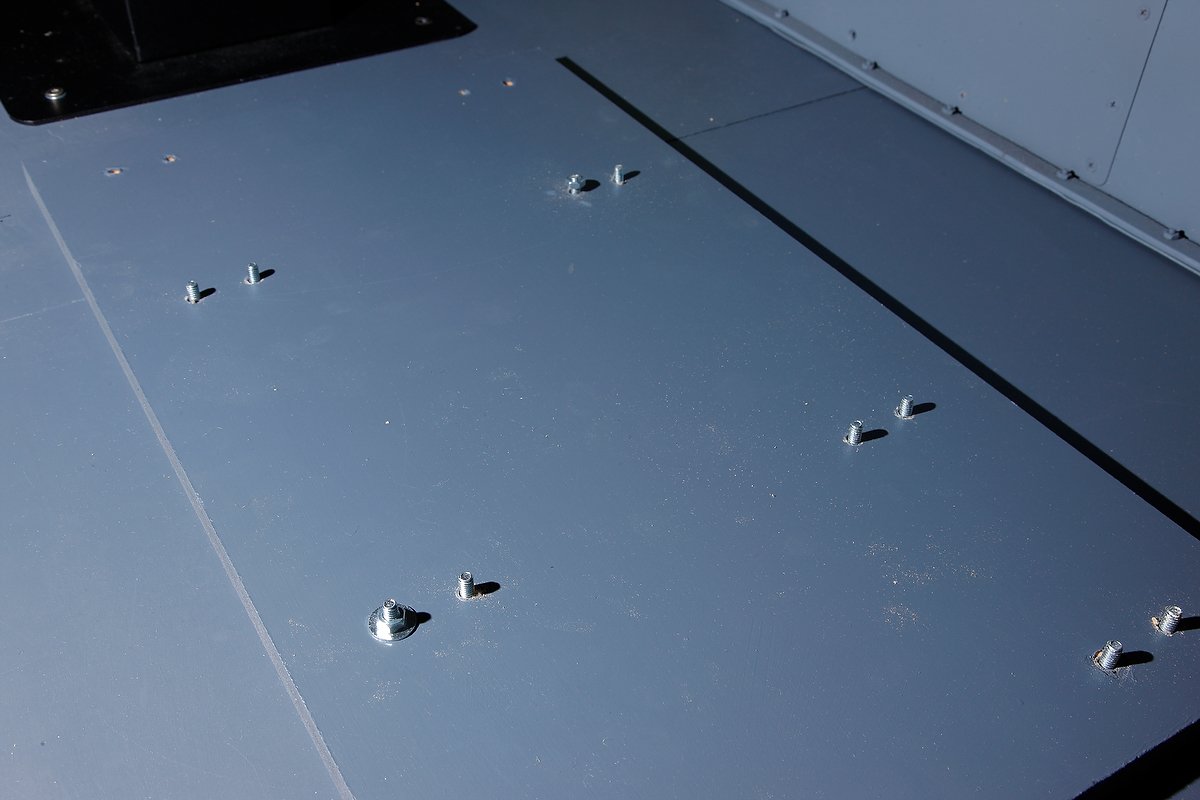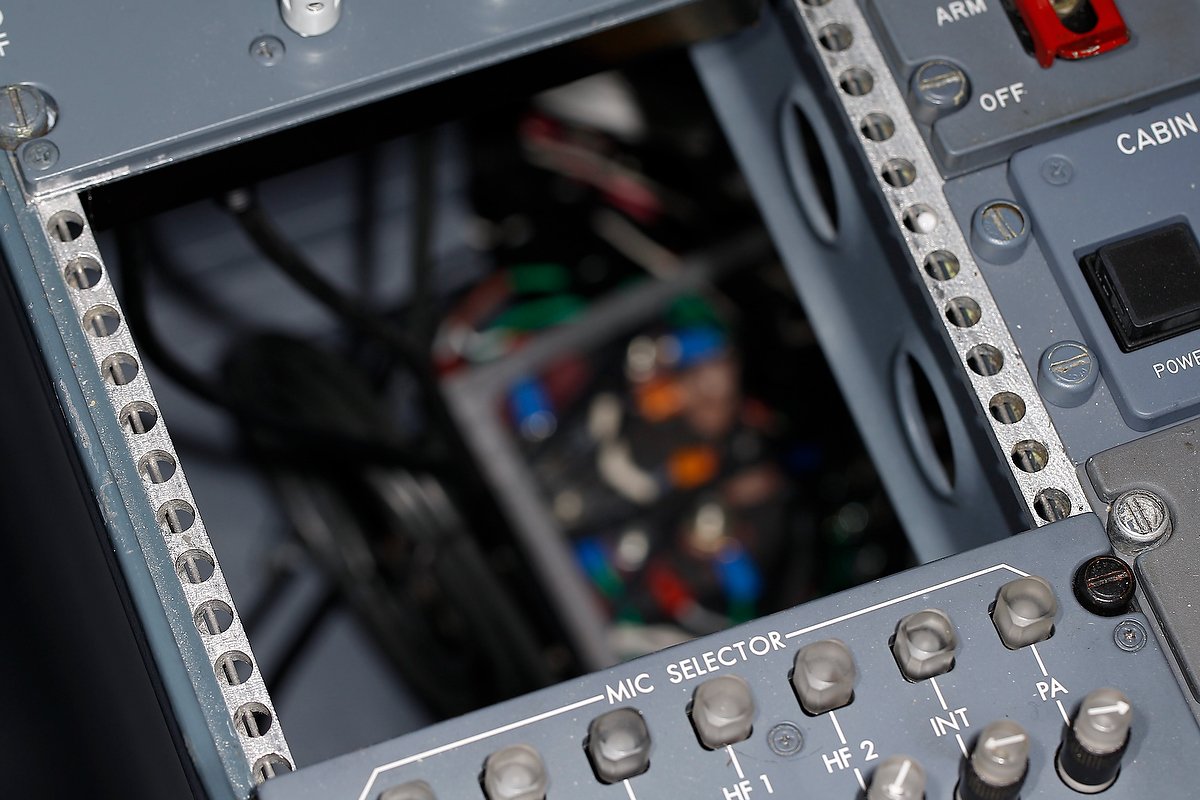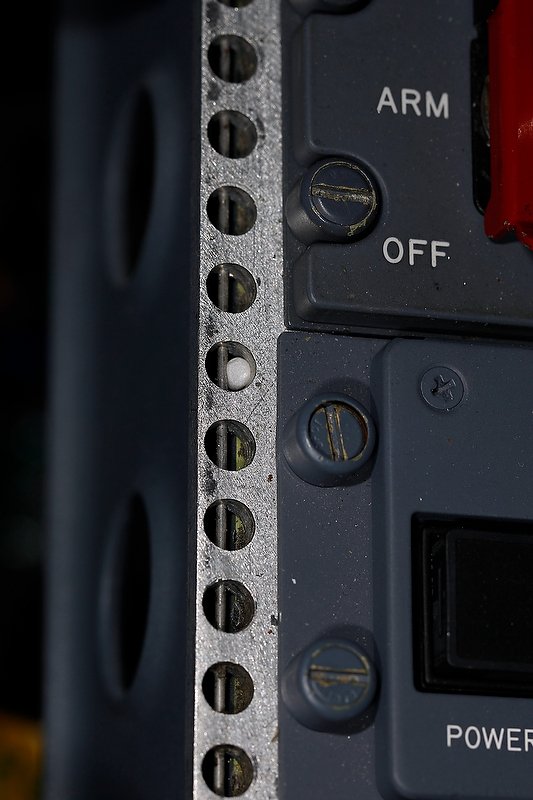Using Genuine B737 Aviation Parts
/A colleague grinding the tails from genuine DZUS fasteners. These will then be attached to reproduction modules to enhance their appearance
There is something fundamentally different when using a genuine piece of aircraft equipment instead of a replicated item – It’s difficult to define, but the idea of using a piece of hardware that flew thousands of flight hours, in good and bad weather, has a certain appeal.
You will notice when you peruse the below list that many parts are not Next Generation, but are from classic 737 airframes, Finding Next Generation components is time consuming and can have long lead times. In the interim, I am using classic parts as fillers. Fortunately, some components used in the classics, especially the 737-500 are also used in the Next Generation.
The following OEM parts are currently used and converted:
737-500 yokes and columns (2)
737 Captain-side stick shaker
737-300 throttle quadrant
737-300 telephone and microphone
Jetliner style aviation headset (was formally used in an United B737)
737-300 three-bay center pedestal
737-400 fire suppression panel
737 yoke trip indicators (2)
737 rudder pedals (2)
737-500 audio control panels (2)
737 Weber captain and first officer seats
MD-80 clock (flight officer side of MIP)
737 overhead map light
737 korry switches
737-500 tiller handle
737-300 Forward & Aft Overhead Panel w/ Coles engine switches & genuine light switches
DZUS fasteners
737-800 flap guage
737-800 Yaw Dampener gauge
737-800 brake pressure gauge
I would like very much like to replace the ADF and NAV modules with OEM panels; however, need to research the feasibility in doing this. In the meantime, I’m using reproduction navigation radios manufactured by Flight Deck Solutions.
Historical Significance
The historical significance of using genuine parts cannot be ignored. It’s relatively easy to research an aircraft frame number or registration number and in the process learn where the aircraft was used and in what conditions.
For example, the throttle unit I am using was removed from a South West B737-300 that plied the continental USA for many years, whilst the yokes and columns were previously used in a B737-500 operated by Croatian Airlines. The clock I have for the flight officer side of the MIP came from a FedEx MD80 and one of the ACP units was used by Aloha Airlines in Hawaii.
Recycling
Using OEM used parts helps the environment!
For a start, you are not purchasing new reproduction parts made from virgin resources. Secondly, the used parts you bought probably would have been destined for expensive recycling, or alternatively disposed of to landfill.
Recycling can be fun!!
It’s a good feeling to convert something destined for disposal and bring it back to life.
Toughness
One of the major benefits of using OEM aircraft parts is their longevity and ruggedness. Whilst none of us want to damage our simulators through over zealous use; it can and does occur from time to time. Replica parts are – well a little delicate. To ensure long life you must treat them with care.
It’s the opposite with genuine aircraft parts; damaging a genuine part with normal use is almost impossible.
For example, a speed brake lever is relatively easy to bend or break on any number of replica throttle quadrants on the market; damaging a genuine speed brake handle is very difficult as they are constructed from high grade materials to withstand genuine stresses (pilot-driven or otherwise).
Simulation pilots are often as rough on their gear as genuine pilots are; I’ve seen simmers jab ACP buttons with enough force to break a piece of plastic. Genuine buttons are made to withstand this heavy-handed treatment, replica parts – break!
Aesthetics – Look Your Best
It’s a fact; aN oem aircraft part looks 100% more realistic than a simulated part – that’s obvious. If your center pedestal has an assortment of genuine modules mixed in with replica modules, the pedestal will appear much more authentic than one comprised solely of simulated units.
You will be surprised that small things can make a huge aesthetic difference. Take for example, DZUS fasteners. I bought a box of fasteners sometime back and use them wherever I can to replace the reproduction fasteners or screws that many manufacturer’s use. If the fastener does not fit the appropriate hole in the reproduction module, I either enlarge the hole with a drill bit, or if this isn’t feasible, I cut the tail from the fastener leaving only the DZUS head. I then use a piece of sticky blue tack or crazy glue to secure the DZUS head to the appropriate part.
OEM B737-300 two-bay center pedestal showing mix of reproduction and oem components
The fasteners I've used were purchased second-hand; therefore, they show wear and tear. I don’t mind this used and abused look. Yes it sounds rough and ready, but the end result looks very pleasing to the eye and more faithful to what you would see in an operational flight deck.
The confines of the flight deck are not as clean as one might expect, and instruments are scratched and dented; pilots rarely concern themselves with aesthetics and technicians complete their maintenance quickly, as an aircraft not flying equates to lost revenue for the airline.
The use of genuine parts adds to the immersion factor, and as a Dutch simmer recently commented: “It makes the simulator more alive”
Availability of Parts
oem aircraft parts can be difficult to find and it’s a hit and miss affair. As newer aircraft are brought online, airlines scrap their older fleet and parts become readily available.
Finding late model Next Generation parts, at a reasonable price is almost impossible; these parts are still serviceable. Parts in older aircraft may also be serviceable; however, they must meet safety regulations and be inspected and approved by a certified agency. This process is expensive and many airlines find it cost prohibitive; therefore, parts are sold as scrap.
E-Bay can be a good place to find parts. Search for aviation parts - Boeing, 737 or Gables. Aviation scrap yards are also invaluable, as are the classified sections in various flight simulation forums on the Internet such as My Cockpit and Cockpit Builders.
Conversion - Use in Flight Simulator
This can be minefield to the uninitiated.
OEM parts often operate on a variety of voltages, and it’s not uncommon to need 5, 12, 18 and 24 Volt power supplies to enable an OEM part to work correctly. Further, the wiring inside the neat-looking box can be a rat’s nest of thin wires weaving their way to and from a variety of unidentified pieces, before terminating in an electrical connection rarely found outside the aviation industry (Canon plug).
I am not an expert in conversions (although I am learning quickly.....). I’m lucky in that I have access to a few people who are very knowledgeable in this area and are happy to share their knowledge with me.
Interfacing
There are a number of ways to interface an OEM part with flight simulator. The easiest is to use is a Leo Bodnar BU0836 joystick card, or similar, using standard flight simulator commands and/or FSUIPC. The use of these cards makes assigning functionality in flight simulator very easy and straightforward.
One BU0836 card provides 12 inputs which correlates to 12 individual switches or buttons. The 0836 card also has the capability to have a matrix constructed which increases the number of available outputs. Another joystick card that is very good and easy to configure is the PoKeys card.
The inside of a 737-500 ACP module showing the rat’s nest of wiring that can be found within an OEM module
For functionality that requires movement, a servo motor will need to be used and configured in FS2Phidgets. Phidgets allow you to program almost any moving part, such as the needle of the rudder trim module or the trim wheels of a throttle unit. Digital servos are better than analogue servos as the former do not make an audible squeaking noise when connected to power.
By far, the most difficult part of any conversion is discovering what wire connects to what functionality. Finding the wire can be challenging in itself as most avionics modules are a nest of wires, diodes and electronic circuitry.
You Have A Choice
You don’t have to use reproduction simulator parts throughout your flight deck – there is a wide selection of used aviation parts available, and with a little searching, you probably can find what you want.
OEM parts frequently can be found at far less cost than their reproduction counterparts, and in every case will always look more visually appealing. If you’re not up to the task of conversion, there are individuals that can convert modules for you. You will then need to configure the functionality in FSUIPC or directly in the avionics suite used. At the very minimum, using DZUS fasteners will bring your simulator to the next level of realism. But be warned, using OEM parts evokes a desire to replace anything replica with something real.
In my next post we will look at converting two genuine B737 Audio Control Panels (ACPs) to flight simulator use.
















































































